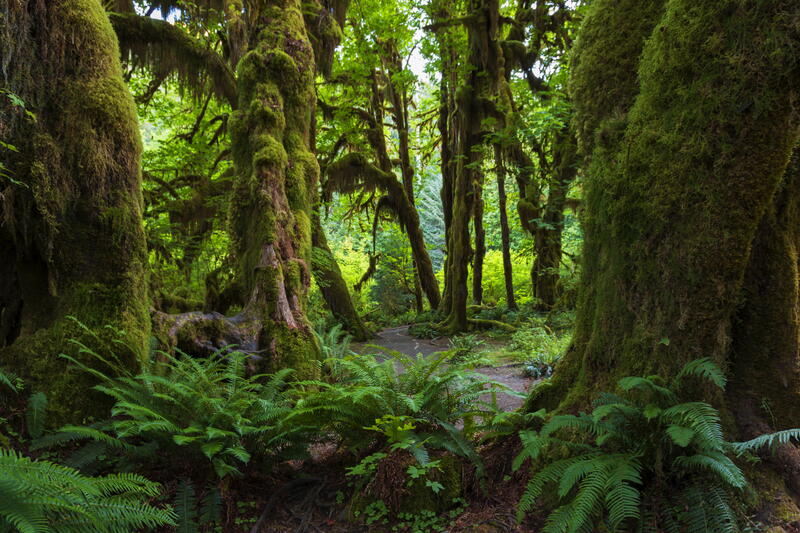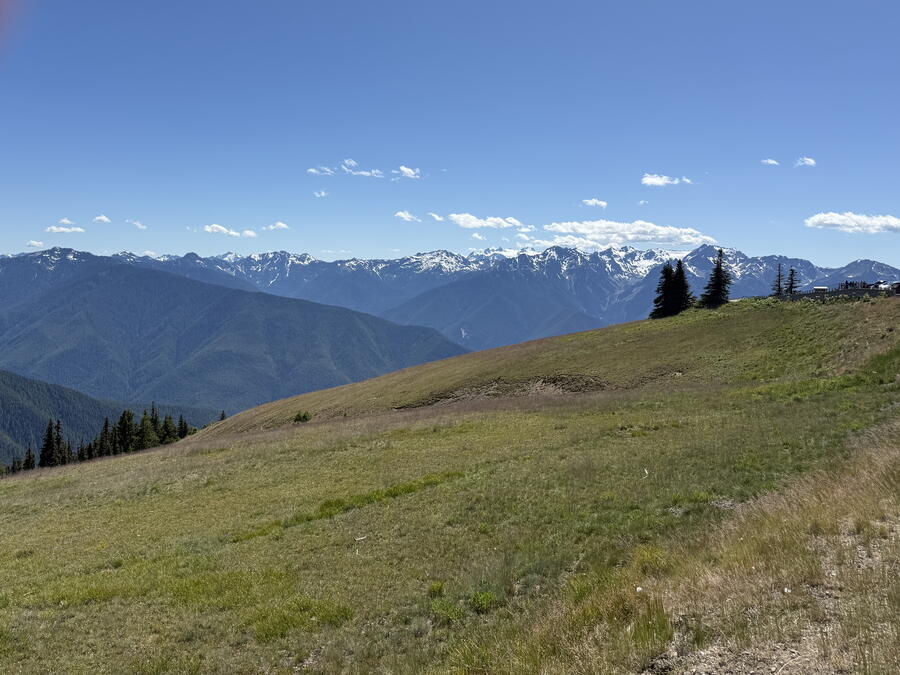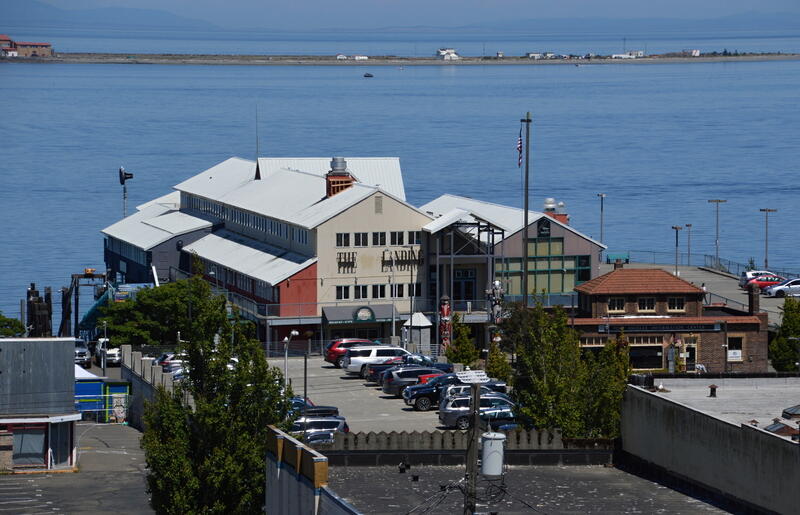While it’s not one of my favorite movie series, the “Twilight” saga makes me think of what the Olympic Peninsula in northwest Washington State mostly looks like. Endless, lush subalpine rainforests blanket most of the landscape, culminating in a fog-shrouded coastline and teeming with abundant wildlife. But if you are coming from Seattle, as we did, you don’t anticipate the abbreviated time you’ll have due to the long drive and extended wait for lunch in Port Angeles.
So, we had grand plans of visiting Olympic National Park – see the mountains and glaciers, hike the forests, maybe visit that dramatic continent’s edge. But we could only do one of those things, due to our trek from the ferry to the park’s gateway and our longer-than-anticipated lunch break. Still, I’m glad that I finally visited this evocative place, which has inspired ancient legends and mysteries, not just a silly, nearly twenty-year-old tale of a vampire/werewolf/mortal girl.
There are about a half dozen entrances into the park, but most people will access it from Port Angeles, a town of about 20,000 and on the edge of the Juan de Fuca Strait, which separates the U.S. and Canada. I think we might have been better off staying here and exploring the Olympic area, because I would have loved to see more of it. Here are its three most distinctive regions.

Ocean and coast
None of Olympic National Park is located on the Pacific, but many visitors will visit this area during their trip. The Daniel J. Evans Wilderness covers nearly all the coastline, and what doesn’t is indigenous reservations. Like many areas in Washington State, the tides roll in and out twice a day, providing a dramatic contrast in the inlets, tidepools, and bays. The animals in this rugged area face a challenging existence due to the rough surf and strong winds. It’s also the area where salmon come out to the ocean, before they mature and swim upstream to spawn. The largest town in the region is Forks, made famous by the “Twilight” saga.

Ancient forests
Of all the areas I wanted to see in Olympic, this was probably the one I wanted to see the most and the one that I imagined the park to resemble. Due to the abundant precipitation in the Pacific Northwest, particularly in this region (40 to 240 inches of rainfall), many trees have flourished under a rainforest ecosystem, as have the animals that inhabit them. Most of the park consists of this landscape, and the elevation ranges from sea level to nearly 8,000 feet. At those higher altitudes, there is a greater prevalence of subalpine and montane forests.

Mountains
Here is where we spent our time on Hurricane Ridge, which affords the best view of Mount Olympus, the park’s highest peak. We also completed a loop trail that scaled a steep hill, but we were rewarded with an even grander vista of the range. From lava flows, basalt formations, and the eventual movement of sandstone and shale, these peaks were created over tens of millions of years. Those forces also brought the Juan de Fuca Strait and Puget Sound, which separated the peninsula from the mainland. You can now encounter over twenty species of unique plants and animals here.

Port Angeles
The main town on the Olympic Peninsula serves as the base for many park visitors. Our original plan was to stay one night in Seattle and one night here, allowing us more time to explore. That’s probably what we should have done, as the round-trip consumed a significant amount of time and cut into our visit. So, that is what I recommend if you visit here.
